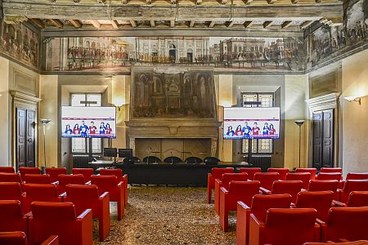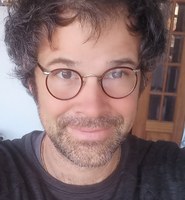Exploring intangible realities using virtual reality: from molecules to numadelics
Toward new horizons in scientific research

-
Date: 12 MARCH 2024 from 17:30 to 19:00
-
Event location: Sala Rossa, Palazzo Marchesini, Via Marsala, 26 - Bologna - In presence and online event
-
Type: Lectures
In 1977, artificial and augmented reality (AR) pioneer Myron Krueger began his paper “Responsive Environments” with the observation that “human-machine interaction is usually limited to a seated (person) poking at a machine with (their) fingers or perhaps waving (their) hands over a data tablet.” Krueger went on to speculate that real-time, multisensory interaction between humans and machines might enable new approaches for exploring realities which are difficult to visualize. The nanoscale is a good example of one such reality: because it is inaccessible to our conventional sensory organs, we must construct aesthetic projections that our brains can effectively parse and process in order to understand its behavior. I will provide an overview of how cloud computing and virtual reality are enabling new approaches to scientific research, enabling us to visualize realities which are otherwise imperceptible, and interact with realities that are otherwise intangible. I will illustrate how new VR and AR tools that combine human computer interaction (HCI) and high performance computing (HPC) enable groups of researchers distributed across the world to simultaneously cohabit real-time simulation environments and interactively build, inspect, visualize, and manipulate the dynamics of complex molecular structures with atomic-level precision, with applications to areas that include biochemistry, nano-science, and science education.

Speaker
ISA Visiting Fellow - David R. Glowacki
CiTIUS | Intelligent Technology Research Institute, Spain
DO YOU WANT TO ATTEND THIS lecture?
-
Sala Rossa, Palazzo Marchesini, Via Marsala, 26 - Bologna
If you prefer to attend this lecture in presence, you should write to segreteria.isa@unibo.it within March 12, 12 p.m. and book your place. The places will be assigned on “first come first served” basis.
Please note that the building is not equipped so as to facilitate access for wheelchair users or people with mobility issues.
PhD students and researchers who are interested may request an attendance certificate by writing to segreteria.isa@unibo.it specifying their birthplace and date of birth.
The delivery of the attendance certificate requires the attendance of at least 70% of the lecture.